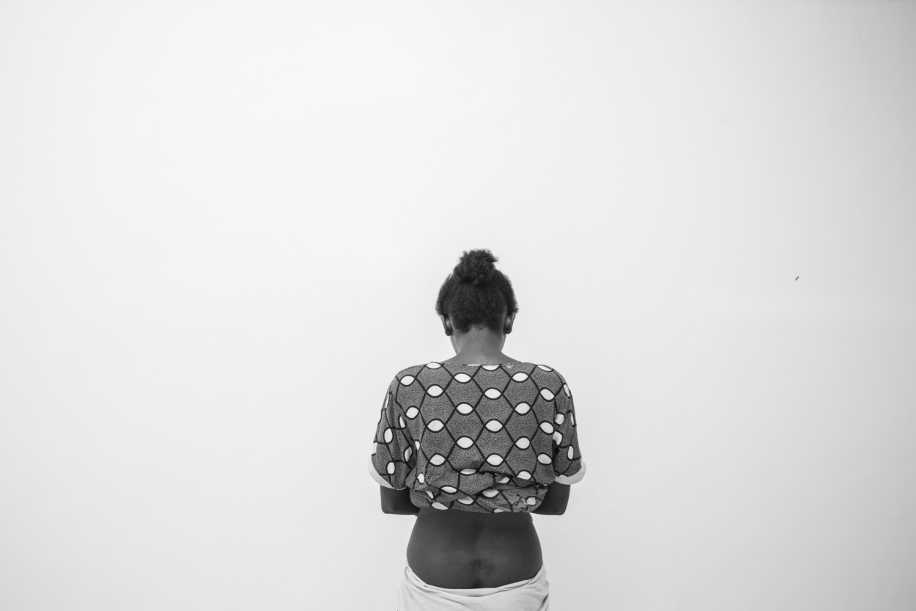

Um Rakuba refugee camp – Gedaref – Sudan. 7 June 2021.
A Tigrinya girl (21) shows the signs of sexual violence. Two days after the event, she decided to undergo a medical examination and seek psychological support offered to women inside the camp. This girl ran away during the bombing in Tigray, and has been a victim of sexual violence perpetrated by compatriots within the camp where she lives. Many women have experienced violence in the countries at war from which they flee, but they are highly exposed to the risk of becoming victims of abuse during their journey too, as well in the areas hosting refugee camps (“Sequestri lampo e abusi su bambini in Sudan”, Agenzia Habeshia, 2021).
The violence against women during conflict cannot be separated from violence against women during ‘peacetime’, and forms of violence, such as public rape, designed to humiliate communities, only function in a context where deeply held patriarchal views permeate society (("Post-War Backlash Violence against Women: What Can Masculinity Explain?", Pankhurst, 2008).
Make Comment/View Comments
Additional Credits
Video
Photographer Statement
Cinzia Canneri has a degree in psychology and in photography at the Marangoni Foundation of Florence; she later made a masterclass in photojournalism in Rome. Her interest is focused on social reportage that deals with trying to find the incidence of uneasiness or resilience behaviour in the intimacy life of people or community.
Her pictures have appeared in some magazines as Espresso, Millennium, Mind, Lens New York Times, Days Japan, 6mois, L'Obs, XLSemanal and Aftenposten. Among her awards is the Prize for Canon Young Photographers, a scholarship for the Marangoni Foundation, POY (2016) Award of excellence in category Science and Natural History Picture Story, Umbria World Fest (2017) First award, Poy (2022) First place in category Issue Reporting Story.
License
To license this work for editorial, creative, or other uses, click on the OZMO logo above.
This will take you to the Ozmo website retro toys where you can review the cost and license for the photographs in this exhibit.
You will need to create an account with both Amazon payments and with the Ozmo website as described on the Ozmo website.
Tags
Content loading...
Resources
Affiliated NGO
Contact Photographer
mobile:+393358330978
email: cinziacanneri@hotmail.com
www.cinziacanneri.com
https://www.facebook.com/cinzia.canneri/
https://www.instagram.com/cinzia.canneri/
Stats
2023 ZEKE Award: First Place for Documentary Photography
Women's Body as Battlefield
Photographer: cinzia canneri
2023 ZEKE Award: First Place for Documentary Photography
Exhibit Title: Women's Body as Battlefield
Location: Ethiopia
The targeting of women’s bodies in times of war, but also of peace, has come to light as a systematic strategy which has been used by different actors in many different contexts worldwide.
This project has analyzed the condition of Eritrean and Tigrinya women who moved across the borders of three countries geopolitically linked to one-another: Eritrea, Ethiopia and Sudan.
From 2017 to 2019 the work has documented Eritrean women fleeing from one of the most repressive regimes in the world and seeking refuge in Ethiopia.
From 4 November 2020, following the invasion of Tigray (Ethiopia) by the Ethiopian federal army supported by the Eritrean military forces and Amhara militia, the project’s focus has broadened to include also the Tigrinya women, who joined Eritrean women in their escape from Ethiopia to Sudan.
In Tigray the Eritrean army used sexual violence as a weapon of war against both Eritrean and Tigrinya women: to punish those fleeing their country in the former case, and as an act of extermination in the latter.
The body of women became a battlefield on which there were no sides.
The targeting of women’s bodies in times of war, but also of peace, has come to light as a systematic strategy which has been used by different actors in many different contexts worldwide.
This project has analyzed the condition of Eritrean and Tigrinya women who moved across the borders of three countries geopolitically linked to one-another: Eritrea, Ethiopia and Sudan.
From 2017 to 2019 the work has documented Eritrean women fleeing from one of the most repressive regimes in the world and seeking refuge in Ethiopia.
From 4 November 2020, following the invasion of Tigray (Ethiopia) by the Ethiopian federal army supported by the Eritrean military forces and Amhara militia, the project’s focus has broadened to include also the Tigrinya women, who joined Eritrean women in their escape from Ethiopia to Sudan.
In Tigray the Eritrean army used sexual violence as a weapon of war against both Eritrean and Tigrinya women: to punish those fleeing their country in the former case, and as an act of extermination in the latter.
The body of women became a battlefield on which there were no sides.
Cinzia Canneri has a degree in psychology and in photography at the Marangoni Foundation of Florence; she later made a masterclass in photojournalism in Rome. Her interest is focused on social reportage that deals with trying to find the incidence of uneasiness or resilience behaviour in the intimacy life of people or community.
Her pictures have appeared in some magazines as Espresso, Millennium, Mind, Lens New York Times, Days Japan, 6mois, L'Obs, XLSemanal and Aftenposten. Among her awards is the Prize for Canon Young Photographers, a scholarship for the Marangoni Foundation, POY (2016) Award of excellence in category Science and Natural History Picture Story, Umbria World Fest (2017) First award, Poy (2022) First place in category Issue Reporting Story.
mobile:+393358330978
email: cinziacanneri@hotmail.com
www.cinziacanneri.com
https://www.facebook.com/cinzia.canneri/
https://www.instagram.com/cinzia.canneri/
Content loading...
Make Comment/View Comments


Um Rakuba refugee camp – Gedaref – Sudan. 7 June 2021. A Tigrinya girl (21) shows the signs of sexual violence. Two days after the event, she decided to undergo a medical examination and seek psychological support offered to women inside the camp. This girl ran away during the bombing in Tigray, and has been a victim of sexual violence perpetrated by compatriots within the camp where she lives. Many women have experienced violence in the countries at war from which they flee, but they are highly exposed to the risk of becoming victims of abuse during their journey too, as well in the areas hosting refugee camps (“Sequestri lampo e abusi su bambini in Sudan”, Agenzia Habeshia, 2021). The violence against women during conflict cannot be separated from violence against women during ‘peacetime’, and forms of violence, such as public rape, designed to humiliate communities, only function in a context where deeply held patriarchal views permeate society (("Post-War Backlash Violence against Women: What Can Masculinity Explain?", Pankhurst, 2008).
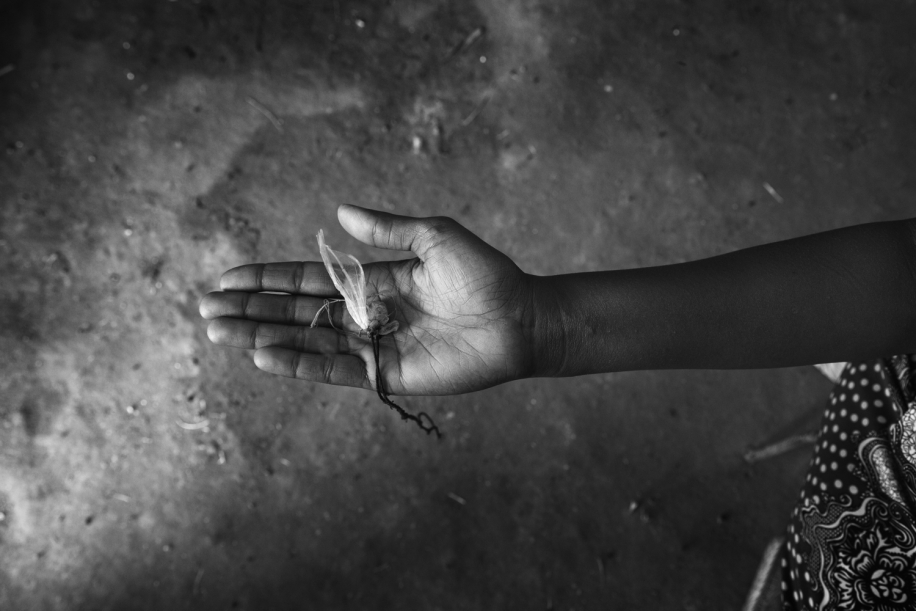
Um Rakuba refugee camp – Gedaref – Sudan. 15 June 2021. A Tigrinya woman is showing a religious pendant belonging to her husband, who went missing during the conflict in Tigray. When the bombing started, he joined the army after showing her and their two children how to escape. She has had no news from him since. Today she lives in poverty, supported only by the aids provided within the camp. She says: “It is the only thing left of my past life". A full-scale humanitarian crisis is unfolding as thousands of refugees flee ongoing fighting in Ethiopia’s Tigray region, to seek safety in eastern Sudan. Since the violence began in early-November 2020, refugees have been arriving at remote border points that take hours to reach from the nearest towns in Sudan. Many are women and children. Most are left with barely any belongings and arrive exhausted from walking long distances over harsh terrain (“Ethiopia Tigray emergency”, UNHCR, 2020).
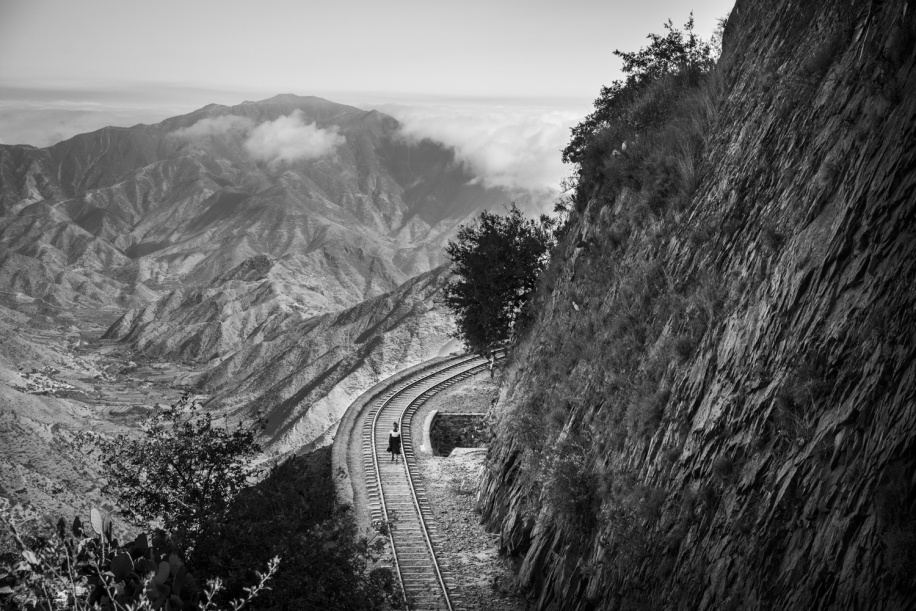
Asmara-Massawa road − Eritrea. 23 March 2019. An Eritrean girl walking along the railway that connects Eritrea with Ethiopia. The majority of children in Eritrea grow up without the protection of parents, who have emigrated or are serving in the military indefinitely, in unknown locations. This causes children to develop a strong desire to escape to a new life and to leave their country at a young age. Thanks to the peace agreement between Eritrea and Ethiopia signed in September 2018, the average of daily arrivals to Europe in the three months following the reopening of borders revealed that many children have actually run away without their family knowing it, often in the attempt to reach their parents already abroad (“Nell’Africa dimenticata”, Avvenire, 2018). Foundation Human Rights for Eritreans (FHRE) has denounced the International Community for providing aid to Eritrea, which even after the peace agreement with Ethiopia still maintains a dictatorial regime considered the worst after North Korea. This causes Eritrean people, including many unaccompanied minors, to leave.
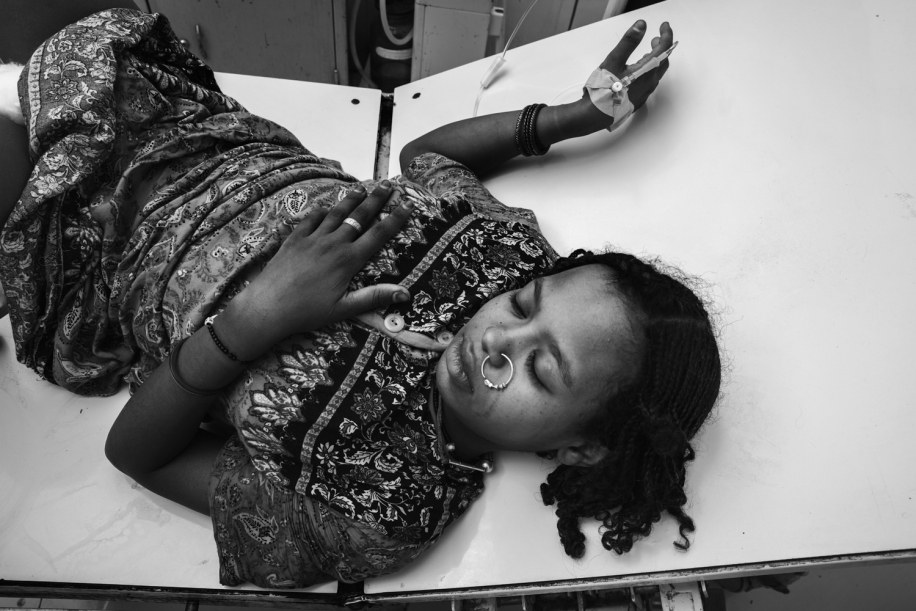
Kassala – Sudan. 12 June 2021. A midwife is suturing the vulva of this girl, who had complications after giving birth because of genital mutilation. This girl came from a refugee camp on the Ethiopian border and moved to Kassala (Sudan) to give birth. According to UN estimates, 200 million girls and women around the world have undergone genital mutilation, and the 80% of cases are concentrated in Africa and especially in the Horn of Africa. The percentage of girls and women aged 15 to 49 years who have undergone genital mutilation is 83% in Eritrea and 74% in Ethiopia (Female genital mutilation: a global concern, UNICEF, 2016). In these countries, most women undergo what the World Health Organization calls “type III circumcision”, an extreme form of mutilation in which the inner and outer labia of the vulva are removed, and usually the clitoris as well. The consequences can be anorgasmia, severe pain during sexual intercourse, cysts and severe infections. In some cases, girls are unable to pass urine or menstrual blood.
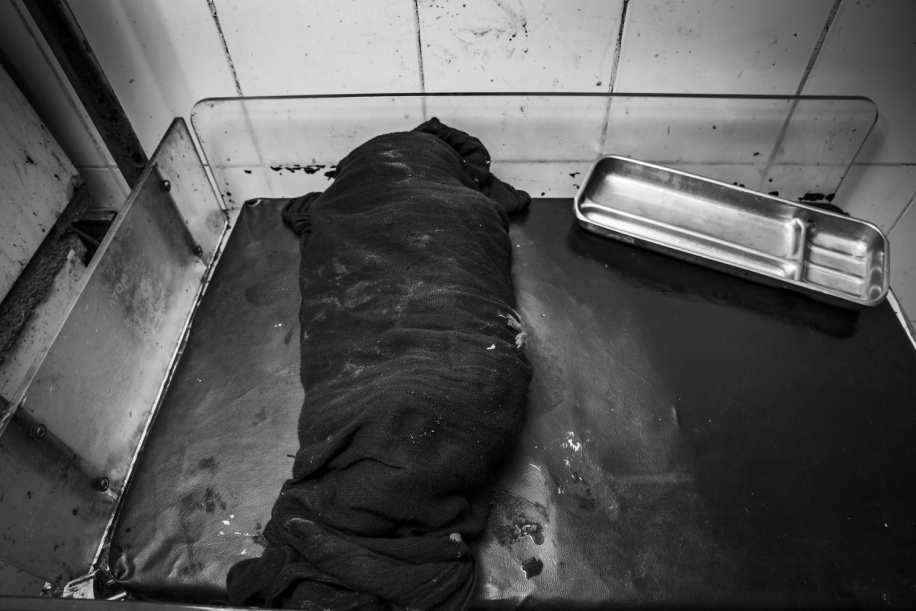
Kassala – Sudan. 12 June 2021. Body of a child who died at birth because his refugee mother arrived in very critical condition at the clinic. She was saved, but her child wasn't. If the mothers are not accompanied, the bodies of deceased children are delivered directly to them, wrapped in a piece of cloth. In case complications arise, and a mother passes away, her body is taken care of for little money by people responsible for burials. Many refugee and migrant women have additional needs (economic, financial and social) that may interfere or compete with pregnancy care. Being a refugee or migrant can be a considered a risk factor in itself and also be a proxy for other risk factors such as lower socioeconomic status, higher burden of disease in the country of origin, language difficulties or low health literacy. According to BMC (“Pregnancy and Childbirth”, November 2014) migrant women of refugee background from different African regions appear to be at greater risk of specific adverse pregnancy outcomes.
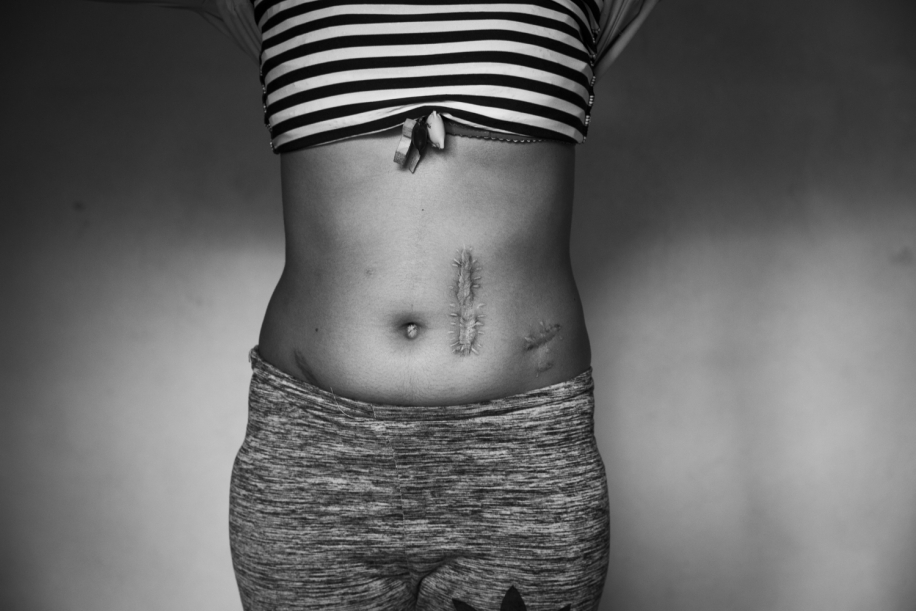
Axum - Ethiopia. 4 April 2019. Hellen (22) shows a wound caused by a bullet shot during a military exercise in Eritrea. The shot has been reported as accidental, but since it occurred after Hellen was stopped by the Eritrean police during her attempt to escape to Ethiopia, it is highly likely that the shot was intentional and intended as a punitive act. In fact, girls who try to leave Eritrea are often shot at the stomach by military police, as a punitive act preventing them from having children. Hellen has tried to escape from Eritrea three times, and was always captured at the border. As a consequence of the wound, she developed many health issues. Nonetheless, she is traveling alone and would like to reach Europe. The United Nations Human Rights Council reports that violence against women and girls is widespread and indeed notorious in military training camps (“Report of the commission of inquiry on human rights in Eritrea”, 2015).
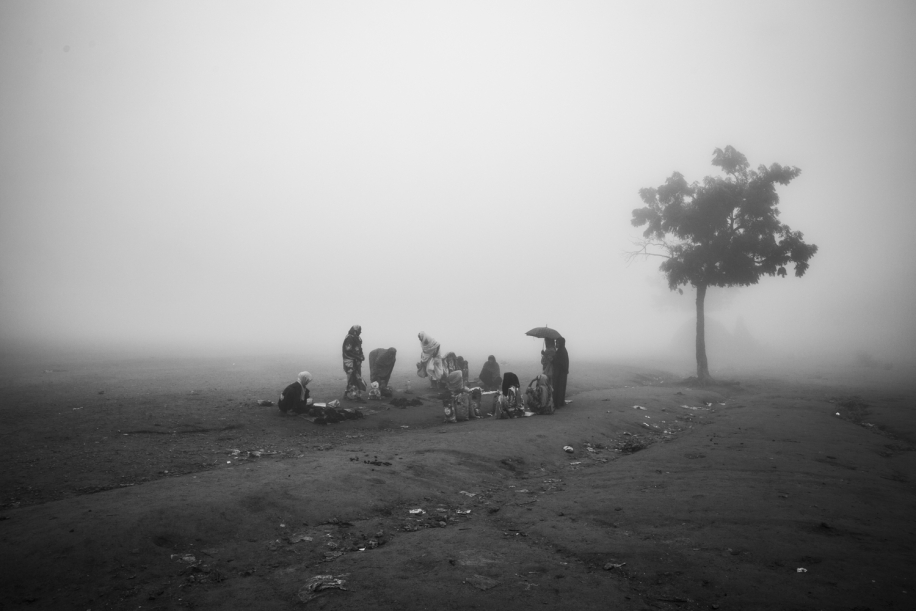
Village next to Massawa − Eritrea. 23 March 2019. Muslim women gather in groups as a measure of protection from possible attacks. Eritrean authorities continue to recognize only four religious groups as official: Sunni Islam, the Eritrean Orthodox Church, the Roman Catholic Church, and the Evangelical Church of Eritrea. The government deems unregistered religious groups to be illegal and punishes them for practicing their faiths publicly. However, in Eritrea the only truly accepted religion is the Orthodox, while Muslims are persecuted. Following an uprising in Asmara in 2017, triggered by the forced closure of a Muslim school, some protesters died. Muslim women detained in prison are more likely to experience torture and sexual abuse (“Eritrea Opposition: security forces kill 28 protesters”, Al Jazeera, 2017). Because of the veil they wear, Muslim women are clearly distinguishable from those belonging to other religious minorities, and they are therefore more exposed to violence. In its 2006 report on religious freedom, the US State Department named Eritrea a "Country of Particular Concern" (CPC) for the third consecutive year. At least a thousand individuals are believed to be imprisoned due to their religious activity or religious freedom advocacy.
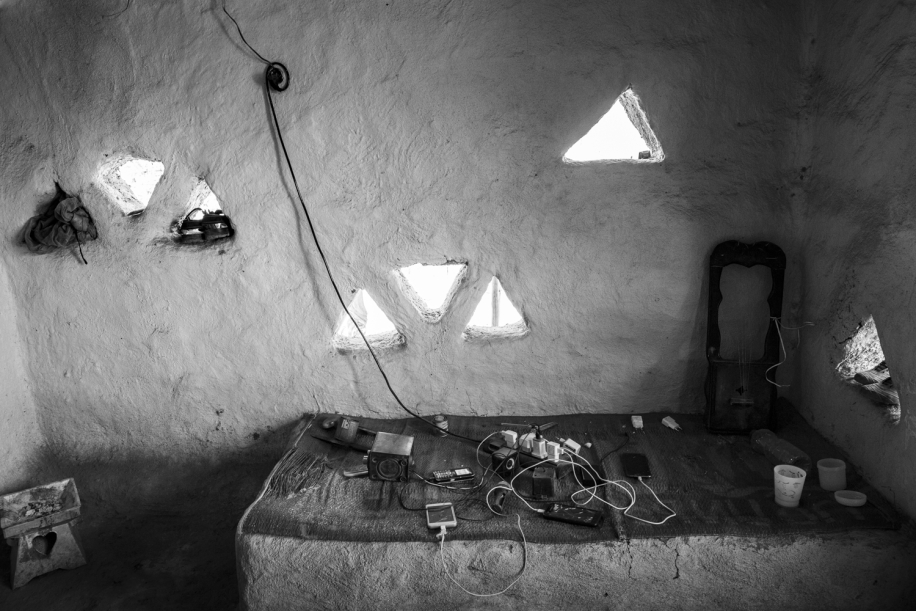
Shimelba refugee camp – Ethiopia. 31 March 2019. Phones being charged. All migrants have a phone, which is often the only object they own when they leave their home country. The use of mobile phones by migrants has both a technical and a relational function: it helps to coordinate during the journey, and allows keeping in touch with the loved ones (“Migrants with mobiles. Phones are now indispensable for refugees”, The Economist, 2017). UNHCR proposes a 'Digital Inclusion' program within the camp to provide fair, meaningful and safe access to communication for people in vulnerable positions. The use of the telephone as a travel aid is part of this project, and special support is offered to women so that they can use phones also as a tool for their safety. Digital Inclusion is providing equal, meaningful and safe access to and use of digital technologies, without leaving behind those in vulnerable positions or traditionally marginalised and equity-seeking groups.
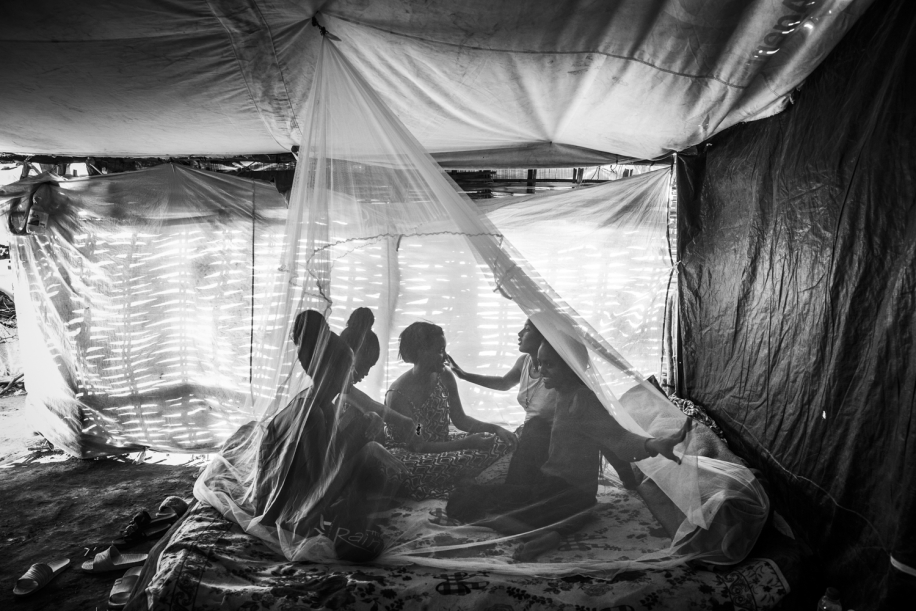
Um Rakuba refugee camp – Gedaref -Sudan. 4 June 2021. A group of unaccompanied underage girls play together. These girls arrived in Sudan unaccompanied to escape the conflict in Tigray. Unaccompanied children separated from their parents have been put in foster or group care and reunited with their families in Um Rakuba camp. Only one of these girls has received news from her family, while the others have had no contacts with family members, and don’t know if any of them is alive. Since the beginning of the conflict in Tigray, 917 unaccompanied and 4,056 separated minors have been registered by the United Nations (“Emergency site Assessment Northern Ethiopia Crisis 4”, IOM Displacement Tracking Matrix, 2021). The conflict in Tigray, which escalated on 4 November 2020, is having a devastating impact on children. Health facilities have been damaged and there is a shortage of medical supplies and drugs, leaving children, pregnant women and those who have suffered sexual violence without access to vital healthcare.
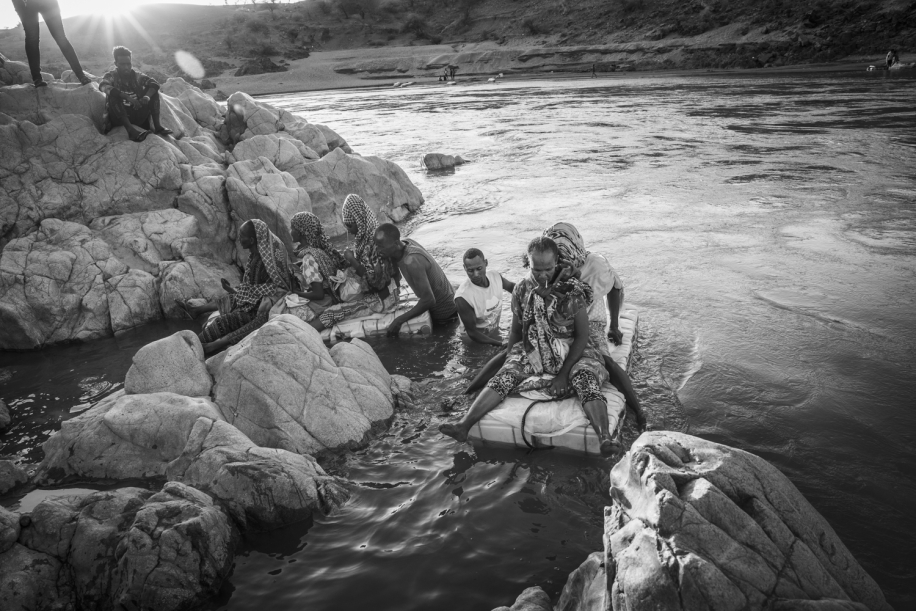
The river Tekezé − Humera border − Ethiopia. 2 April 2019. Women crossing the river illegally to reach Sudan. The Tekezé river connects Sudan, Ethiopia and Eritrea. After the peace between Eritrea and Ethiopia in 2018, the border of Humera was opened only for the Ethiopians, but not for the Eritreans, if not for a very short period of time. The Tekezé river is crossed by Ethiopians and Eritreans with the help of smugglers trafficking goods and migrants. On 9 July 2018, Prime Minister Abiy Hamed and Eritrean President Isaias Afwerki signed a peace deal after twenty years of war. This agreement, initiated by Abiy Hamed, earned him the Nobel Peace Prize. However, Eritreans called this agreement an "external peace", because it responds to international logics but did not lead to a reduction in violations of human rights by the Eritrean regime (“Two years already? Peace between Eritrea and Ethiopia”, SciencesPo Center for International studies, August 2020).
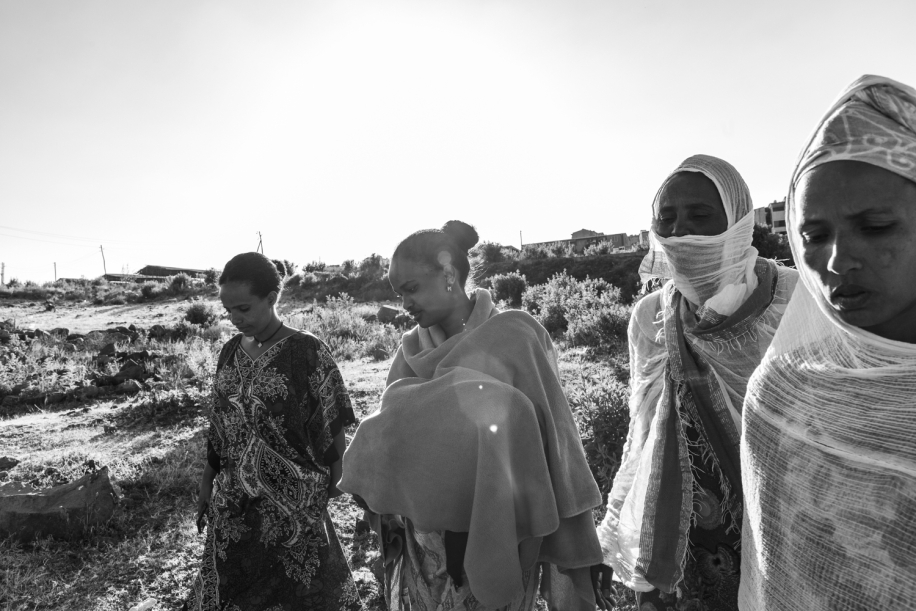
Addis Ababa – Ethiopia. 6 December 2022. Eritrean women walking in the outskirts of Addis Ababa. One of them has just delivered her child who is carried under a blanket. Each of these women faced problems caused by the war and they struggle every day to get food. Conflicts make it more difficult for women and girls to produce, process, and provide food for themselves and their families. They play vital roles in preventing and responding to food insecurity. Gender inequality is the reason why women and girls are differently and disproportionately affected by food insecurity, at risk of severe food crisis, and subjected to gender-based violence, both in peacetime and during conflicts. In September 2021, the Intergovernmental Authority on Development (IGAD), to which Ethiopia has belonged since January 1986 having been one of the founding members, released a press statement on food insecurity and it was pointed out that Ethiopia was among the 10 worst global food crises in 2020 with 8.6 million people not having regular access to food.
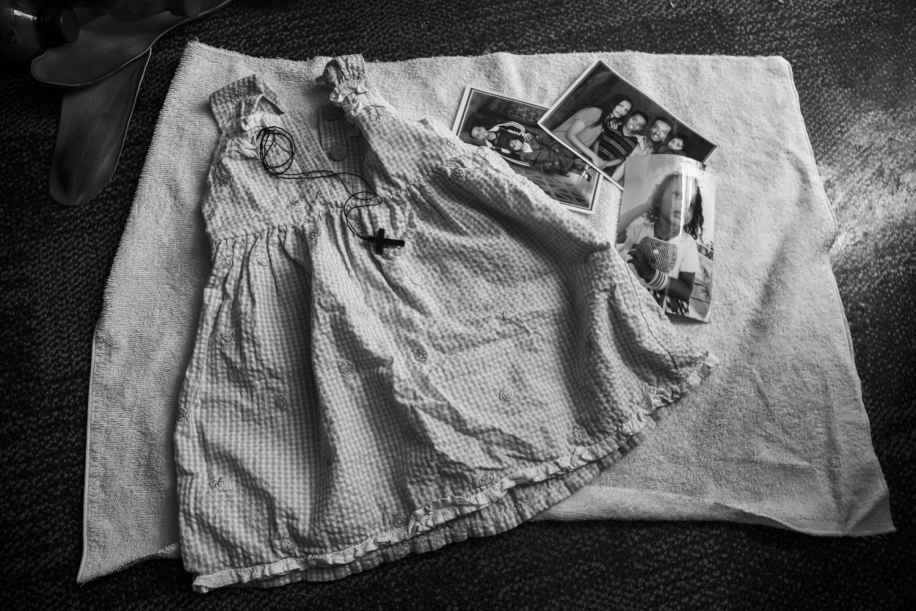
Rita shows some objects she treasures, once belonging to her daughter Elena who died when she was 7 years old, while she was crossing the border between Eritrea and Ethiopia in 2016. Elena had a congenital liver disease and this health condition did not allow her to survive the journey. Elena has been buried along the migration route, in a place that doesn’t have any connection with her family. Rita says she would like to live where her daughter was buried: “Having moved away from my daughter's body means having lost her a second time”. Since 2014, IOM has documented more than 32,000 deaths and disappearances during migration journeys worldwide, although the true number of migrant fatalities is unknown, as many deaths go unrecorded. Data on deaths of migrant children tend to be even more limited. According to IOM’s Missing Migrants Project nearly 1,600 children have been reported dead since 2014 (“Fatal Journeys Volume 4: Missing Migrant Children”, 2019).
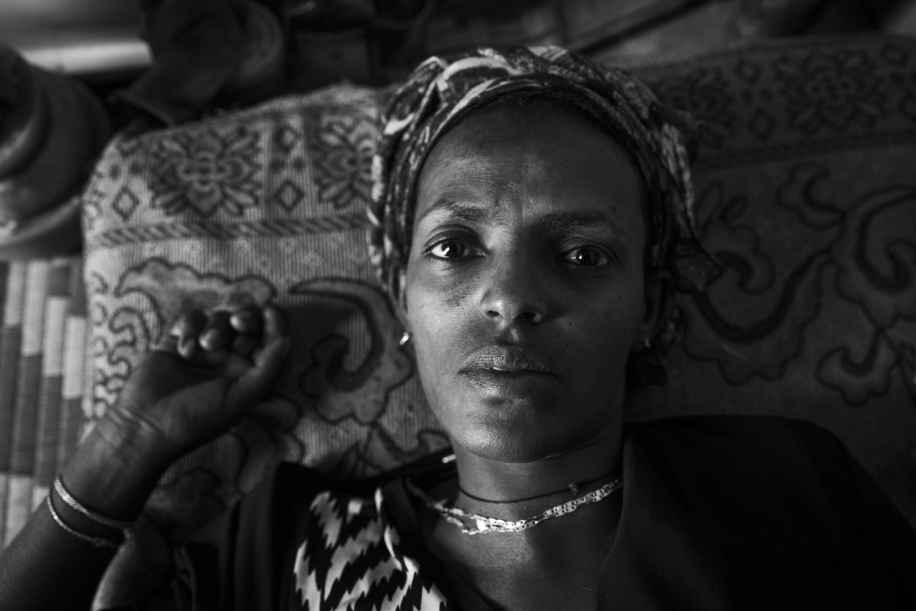
Regat (37). Axum – Ethiopia. 4 April 2019. Regat grew up in Eritrea and escaped to Ethiopia in 2010. She says “I left Eritrea partly to help my family with their deep economic troubles, but I can't see a future ahead.” She currently works at a cafe because she needs money to try to reach Sudan, but she only earns 600 birr – 12 dollars – per month. Ethiopia has a long-standing history of hosting refugees. The country maintains an open-door policy for refugee inflows into the country and allows humanitarian access and protection to those seeking asylum on its territory. Ongoing instability within neighboring states resulted in sustained refugee movements, either directly as a result of internal conflict and human rights abuses (“Refugee situation", Operation Data Portal, 2020). Today Ethiopia has become one of the most insecure countries in the world, especially for refugee women.
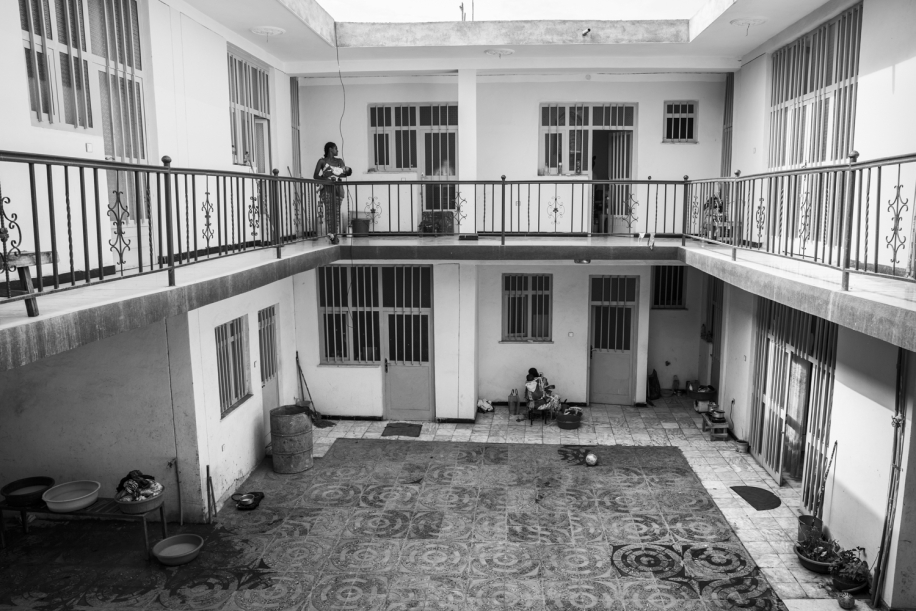
Axum – Ethiopia. 4 April 2019. Women often leave refugee camps for urban centers, where they Refugee women living together in the same building, where they try to create a community and to help each-other. Living in a community is also a form of protection against gender-based violence, which refugee women easily suffer. Violence against women represents a major problem in Ethiopia: according to the Global Gender Gap Index from 2018, in Ethiopia 71% of women fall victim of violence during the course of their life. Women often leave refugee camps for urban centers, where they try to get by and earn the money necessary for the survival of their children, but life in the cities is also marked by exploitation, especially for refugee women (“L’abbraccio tra Etiopia ed Eritrea. Come cambiano mobilità e migrazioni?”, Istituto per gli studi di politica internazionale, 2018). Community life among women creates new relationships that provide material, emotional and psychological support in dealing with problems of daily life.
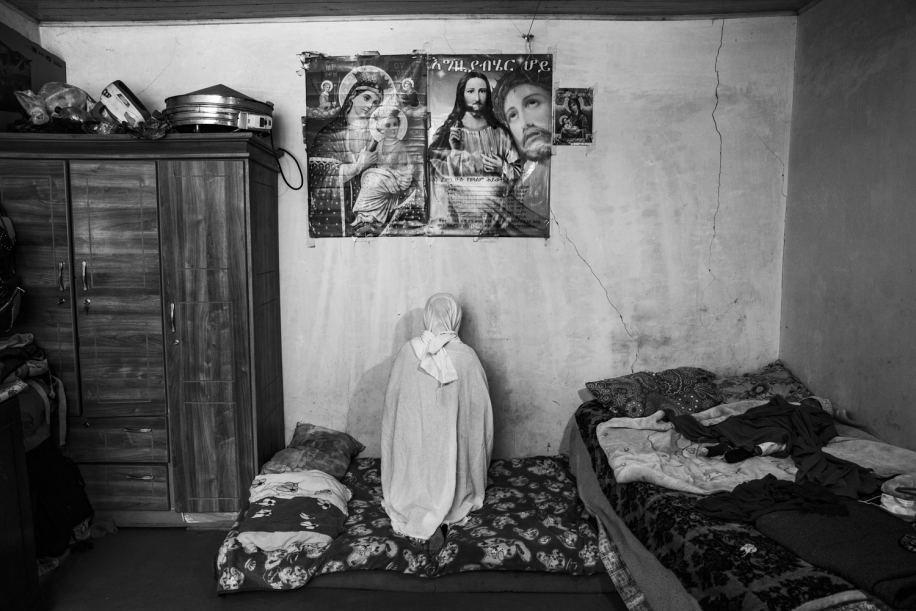
Addis Ababa – Ethiopia. 3 December 2022. An Eritrean woman praying in the shack where she lives. A very high percentage of Eritrean women are religious and find comfort in prayer When women arrive in Addis Ababa, they settle in temporary homes and try to find a job. Afterwards they try to move into more comfortable accommodations, but many of them remain in precarious conditions for years, exposing themselves even more to sexual abuse. Empirical studies consistently show high rates of victimization among undocumented migrants, asylum-seekers and refugees, both while in transit and within destination countries (“Migrant experiences of sexual and gender based violence: a critical interpretative synthesis”, Globalization and Health, 2022). Furthermore, migrants with unstable residency status in the host countries experience economic, social, and institutional barriers in seeking judicial redress and support.
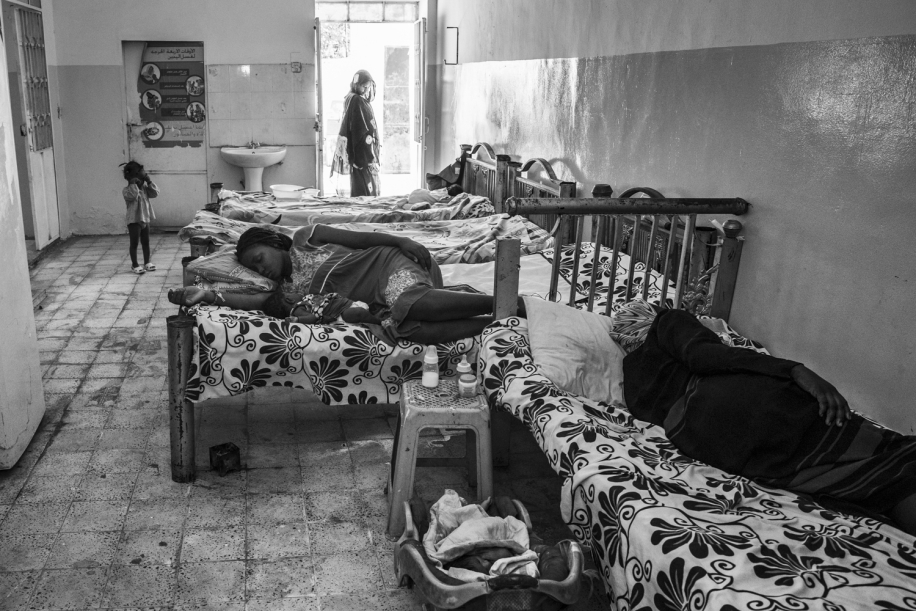
Sudanese and refugee women with children born outside marriage living inside a shelter. In Sudan, having children out of marriage constitutes a serious crime resulting in imprisonment and an important stigma, even if the child was conceived through sexual violence. Many women who are escaping to Sudan and became pregnant after the rapes experienced in Tigray, are socially rejected and condemned. This center, when possible, tries to combine marriages between the victims of rape and their abusers or with the men who didn’t recognize their child, which is why the center is accepted and constitutes an alternative to prison. Extra marital sexual intercourses is a crime, called zina, both for men and for women, but women are severely punished when they get pregnant. Police are present within maternity wards, and conduct investigations to establish whether a pregnant woman is married.
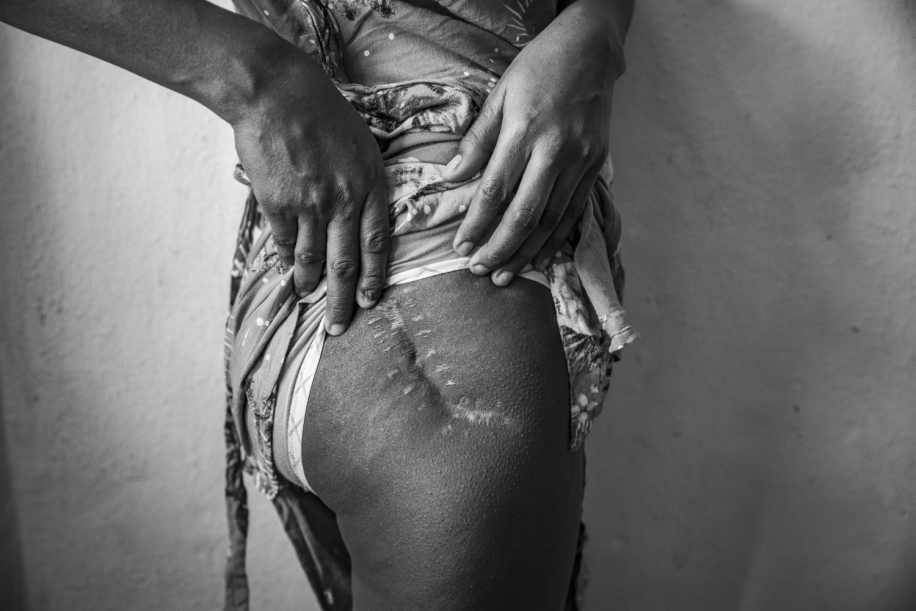
Addis Ababa – Ethiopia. 30 November 2022. Yemane (23) is showing the scar caused by soldiers during a shooting in Tigray. Yemane escaped from Eritrea and used to live in the Mai Aini camp when the war broke out. She was there with her husband, her two children and her sister. During the escape she was raped in front of her children, and her husband was captured and taken away. At the border with Amahara, while soldiers were shooting at him, the sister was wounded and she managed to run with her children. Yamane still doesn’t know whether her sister is alive or dead. Yamane suffers from anxiety disorders linked to post traumatic stress, and she feels responsible for not aiding her sister. The UNHCR declared that 24,000 Eritrean refugees in the Mai Aini and Adi Harush camps located in the Mai Tsebri area, in Tigray, have lived in a status of constant terror and could not access humanitarian aid of any kind (“Thousands of Eritrean refugees trapped in conflict in Tigray”, UNHCR, 2021).
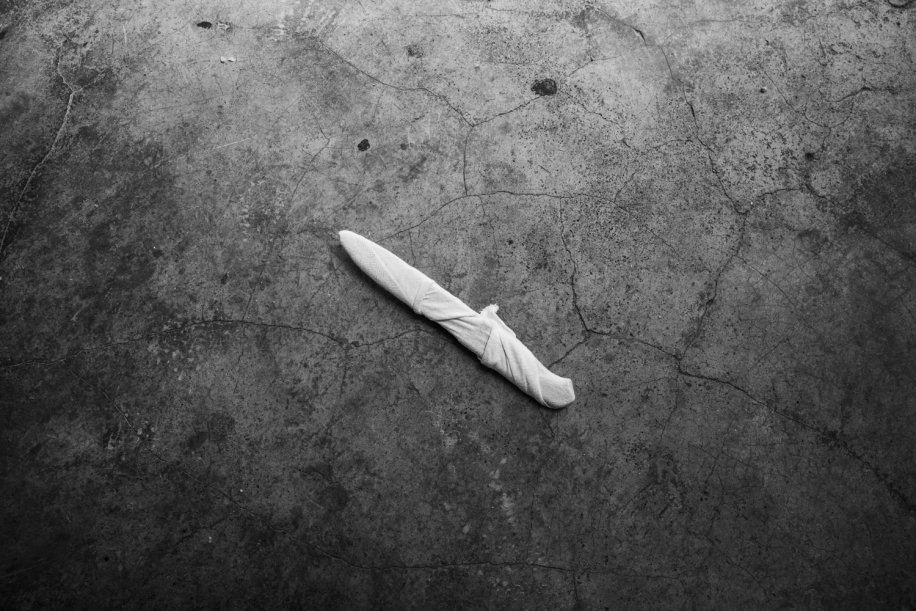
Addis Ababa – Ethiopia. 8 December 2022. Knife wrapped into a cloth and belonging to Ruta Habte (40), who extracted it from under her mattress in order to show it. Ruta has been hit in the back with this knife by three soldiers in the camp of Adi Harush, in Tigray; she had arrived there with her two children in 2019, after the peace agreement between Eritrea and Ethiopia. She was in her tent and she was hit while trying to defend herself from sexual assault. She managed to save herself and, once she recovered, she ran away with her children trying to reach Addis Ababa. She took with herself the knife she was wounded with, and says “I took this knife to defend myself in case I needed to, and I still can’t get rid of it. My blood is still on the blade.” According to the UN (September 2022), rape and crimes of sexual violence have happened “on a staggering scale” since the earliest days of the conflict, with Ethiopian and Eritrean forces and regional militias targeting women and girls, who lived in Tigray, with particular violence and brutality.
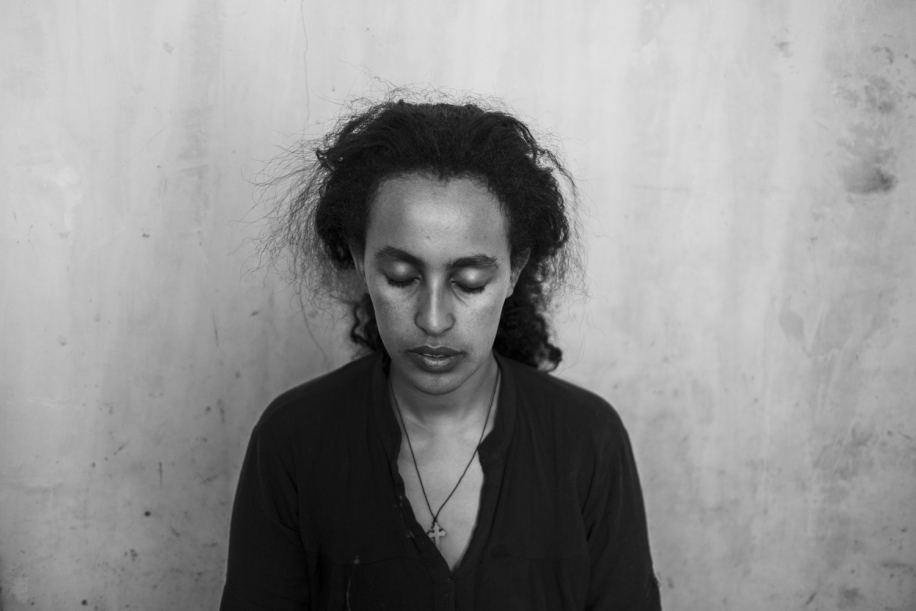
Addis Ababa – Ethiopia. 3 December 2022. Merhawit (31) ran away from Eritrea and used to live in the Mai Aini camp when the war broke out. She ran towards the region of Amhara together with her three children, her husband and her brother. When she escaped she was a few months pregnant with her youngest child, who was then born in Addis Ababa. During her run towards the region of Amhara, her husband and her brother were captured by soldiers. She still hasn't heard any news about them. Once in Addis Ababa she gave up her elder son to a priest’s care. She struggles for subsistence and gathers little money by begging. The Amhara security forces and the Eritrean army, allied with the Ethiopian federal army, are responsible for a wave of mass detentions, killings and forced expulsions in the region of Tigray, in northern Ethiopia. Today in Tigray there is an effort to enforce the peace agreement signed on November 2nd 2022, and there is a quest for justice for the victims and the survivors (“Crimes against Humanity and Ethnic Cleansing in Ethiopia's Western Tigray Zone” Amnesty International e Human Rights Watch”, 2022).
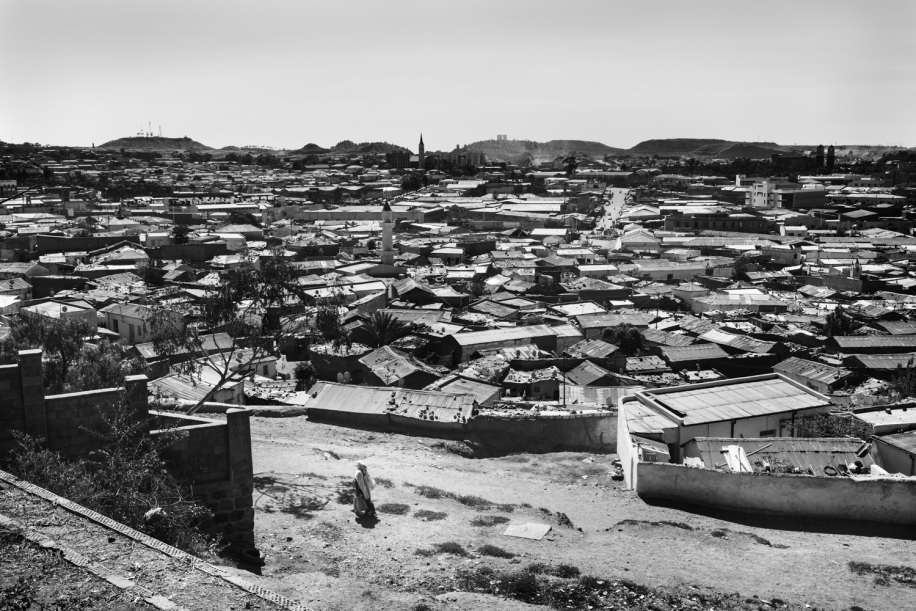
Asmara − Eritrea. 22 March 2019. An Eritrean woman on the streets of the city. Entering Asmara, a peaceful atmosphere reigns: streets are clean, the Italian architecture gives the city a taste of Europe and police is nowhere in sight. Everything seems in strong contrast with the stories of migrants fleeing this country. The espionage network is so widespread that it does not need policemen on the street and the prisons are hidden holes within the city. On 4 June 2016, the Report of the United Nations Commission of Inquiry on Human Rights in Eritrea was published in which the Eritrean government was denounced for creating a pervasive system of espionage, control and repression both within the country itself and among the communities of the Eritrean diaspora around the world. These actions of the regime have led to arbitrary arrests, torture, disappearance of people and even extrajudicial executions. Crimes of enslavement, imprisonment, enforced disappearances, torture, persecution, rape, murder and other inhumane acts have been committed as part of a campaign to instil fear in, deter opposition from and ultimately to control the Eritrean civilian population since Eritrean authorities took control of Eritrean territory in 1991.
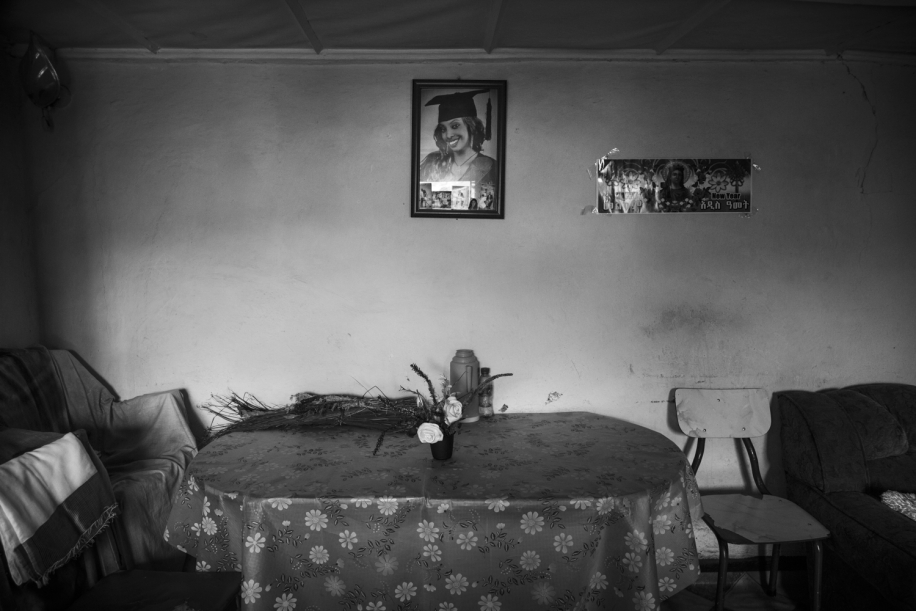
Addis Ababa − Ethiopia. 6 November 2017. The home of an Eritrean refugee family living in Addis Ababa. A migratory journey can become stationary for many years and women decorate the rooms trying to create a familiar atmosphere, allowing them to feel closer to those they have lost. When they leave their country, they usually don’t bring any objects with them, to avoid burdens that can hinder their capacity to face obstacles on the way. Once they settle in the host country, they try to recover some of their belongings through trade across the border or with the help of smugglers of goods. According to UNHCR (Fact Sheet, 2021) Ethiopia is the third largest refugee-hosting country in Africa, sheltering 788,972 registered refugees and asylum-seekers. The overwhelming majority originate from South Sudan, Somalia, Sudan and Eritrea (the latter accounting for nearly 145.752 people).
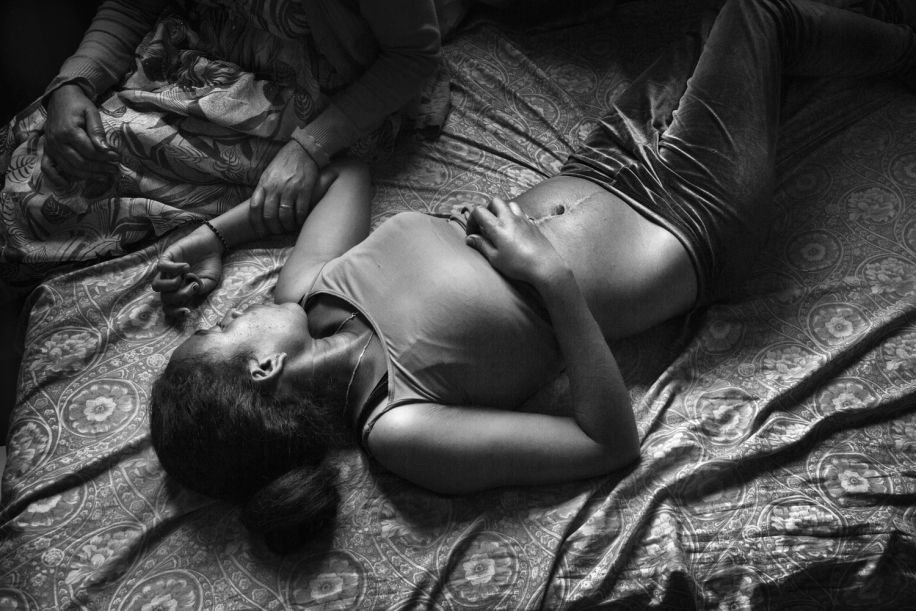
Addis Ababa - Ethiopia. 31 October 2017. Yohanna’s mother sits next to her daughter (22) who has had a kidney removed after having been shot. She escaped Asmara (Eritrea) at 19, as she was supposed to be jailed instead of her mother. At the time, the police wanted to send her mother home after two years of detention, due to her unstable health condition. Yohanna’s mother had been imprisoned for not providing information about her husband’s whereabouts, even if she had lost all contacts with him, once he had fled to Jerusalem in 2015. Yohanna was then shot at the border, in Shambuko (Eritrea), and woke up at the hospital, in Ethiopia. There, she learned that one of her kidneys had been removed. She has no medical record or written document justifying either the surgery or the kidney removal. In 1998, Eritrea and Ethiopia fought a two-year-long war over their disputed border which claimed the lives of at least 70,000 people. The border between Eritrea and Ethiopia has been militarized since 2000 due a peace deal signed, but never been fully implemented.
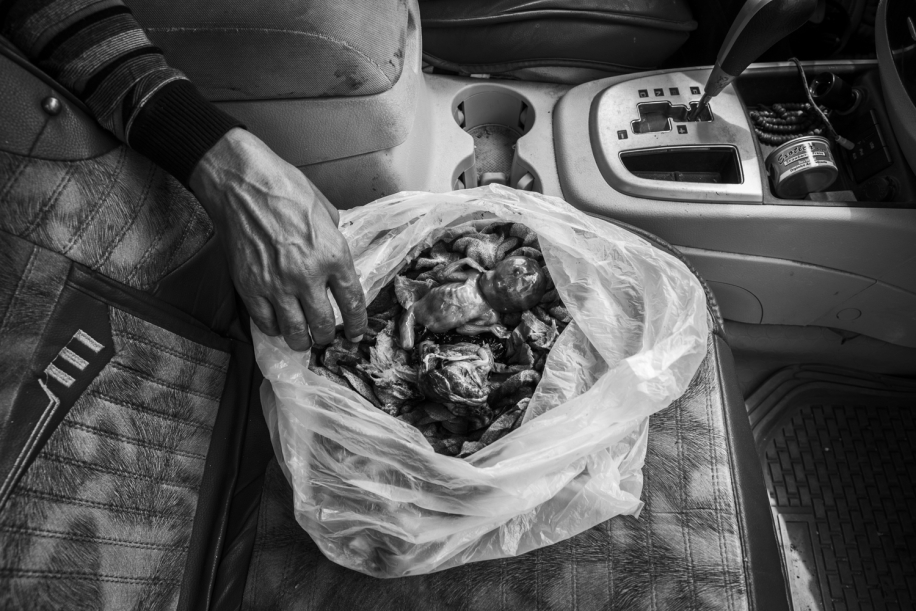
Khartoum – Sudan. 28 May 2021. An unlicensed doctor carries away a fetus after a clandestine abortion. Just outside the center of Khartoum, clandestine abortions are carried out and can be agreed upon with special smugglers. An abortion costs approximately 500 dollars, and many women contract debts in order to be able to perform it, aggravating the precarious economic conditions that block them in the locations where they find themselves at that moment. With the war in Tigray, clandestine abortions have become more frequent, because of rape and because of the high number of women arrived in Sudan (“Ethiopia situation (Tigray Region)”, UNHCR, February 2021). Many raped women turn to clandestine abortion, often after trying self-induced abortion by drinking herbs, poisons or inserting objects into the uterus. According to the Guttmacher Institute, Sub-Saharan Africa (including Sudan) had the highest rate of abortion-related deaths in the world, with 185 maternal deaths per 100,000 abortions; as of 2019, some 6.2 million unsafe abortions occurred in the region.
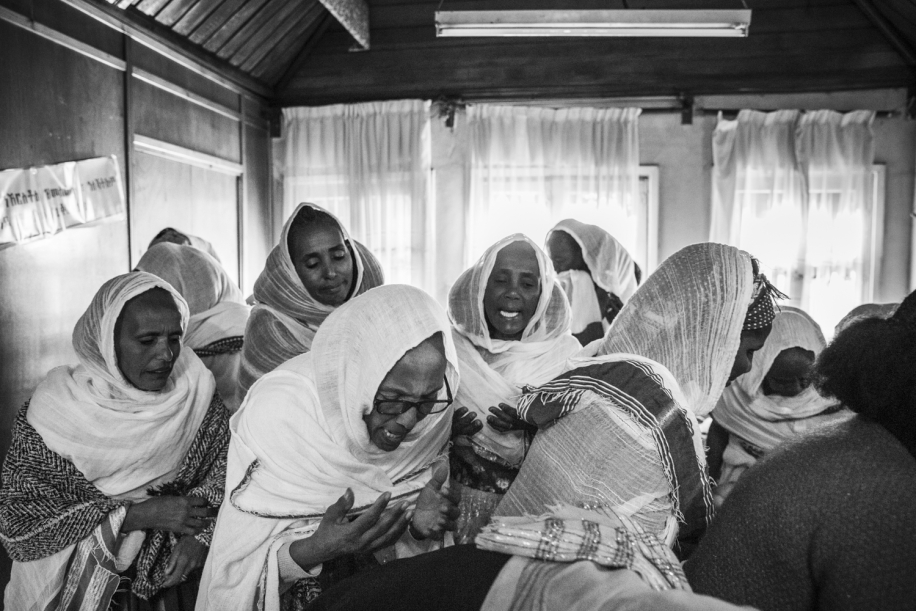
Addis Ababa – Ethiopia. 10 December 2022. Tigrinya and Eritrean women pray for their dead or missing children. While the Eritrean army attacks Tigray, women from these two countries get together in memory of their children. It estimated that the war in Tigray has caused 800 thousand deaths and 2.5 million displaced people. It has been a very serious humanitarian crisis which didn’t draw the attention of the West. The International commission of human right experts on Ethiopia of the United Nations declared to have reasonable grounds to believe that Tigrayan forces killed civilians and unarmed people, raped women, pillaged and damaged or destroyed infrastructures and civil properties (Human Rights Council: Reports, 51/46, September 2022). The president of the Commission, Kaari Betty Murungi, denounced the federal government’s use of starvation as a method of warfare.
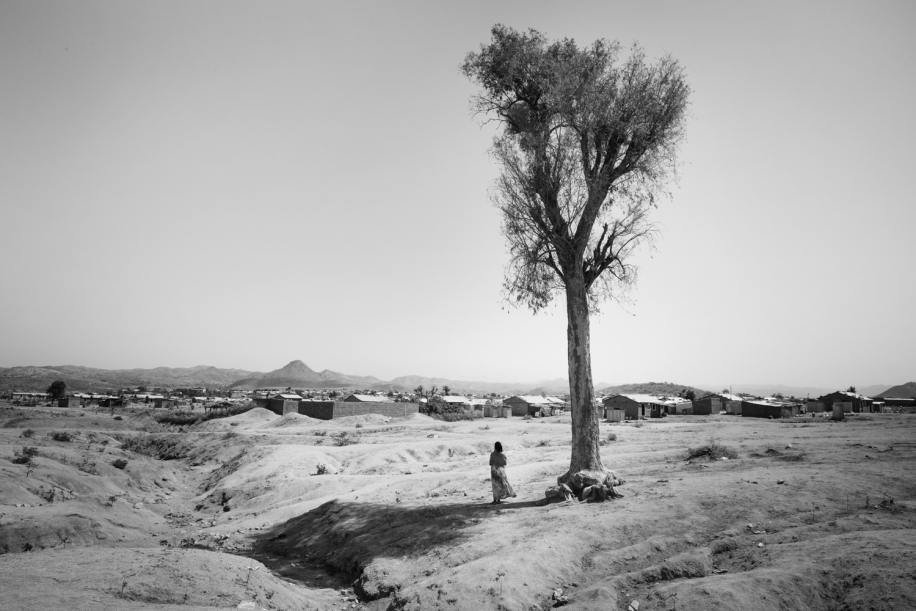
Refugee camp Hitsats – Ethiopia. 31 March 2019. A refugee Eritrean woman stands under a tree just outside the camp. Hitsats camp hosted almost 23,000 Eritrean refugees (UNHCR), and its population has more than doubled since the border opened, following the peace deal between Eritrea and Ethiopia in 2018. It is one of the four refugee camps in Tigray for Eritreans, who make up the third largest refugee population in Ethiopia with 173,879 refugees officially registered (“Operation data portal”, UNHCR, August 2018). The war in Tigray, started on November 3rd 2020, has caused violence against Eritrean refugees gathered mainly in the camps of Hitsats, Adi Harush, Mai Aini and Shimelba, in north Ethiopia. Different sources have reported that forced repatriations have been practiced from these camps (“UN Investigator Probes Alleged Forced Return of Eritrean Refugees from Ethiopia'', Voa News, February 2021) and the estimated number of deportations is 6000 (“Etiopia: campi profughi degli eritrei allo sbando, aprire corridoi e aiuti umanitari”, Agenzia Habeshia, December 2020).
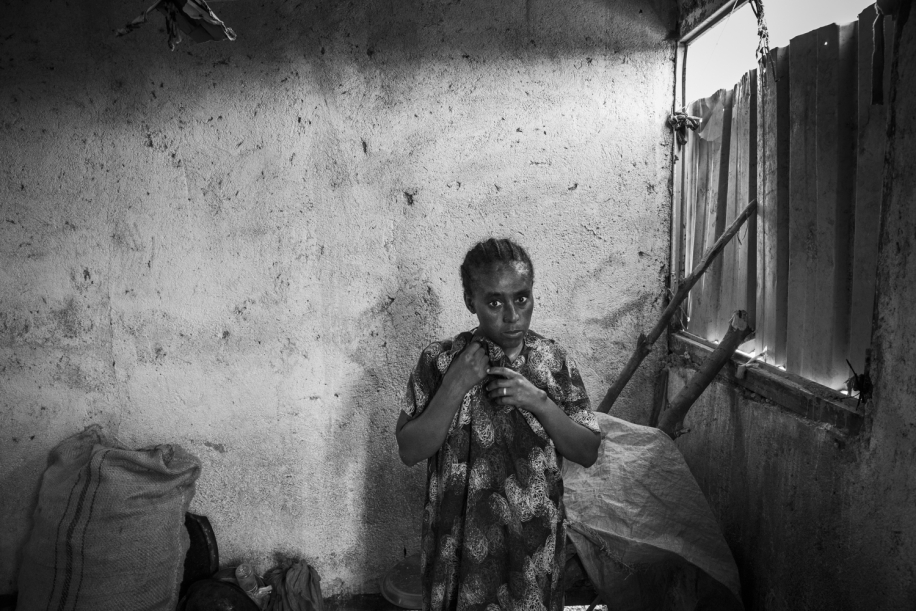
Village 8 refugee camp – Gedaref – Sudan. 5 June 2021. A Tigrinya girl holds the hem of her dress into her hands, because she seeks relief by touching the cloth. This girl arrived here completely alone and shocked; nobody in the camp knows her biographical data, or her personal story. It is unknown whether she had psychological issues before the war in Tigray, but she shows clear signs of post-traumatic disorder, consisting mainly in anxious and fearful emotional state. According to the World Health Organization (WHO) a significant percentage of people who live through armed conflicts will suffer from serious mental health problems and develop harmful behavior that will hinder their ability to live a healthy life. One person in five is living with some form of mental disorder, from mild depression or anxiety to psychosis (“Mental health conditions in conflict situations are much more widespread than we thought”, June 2019).
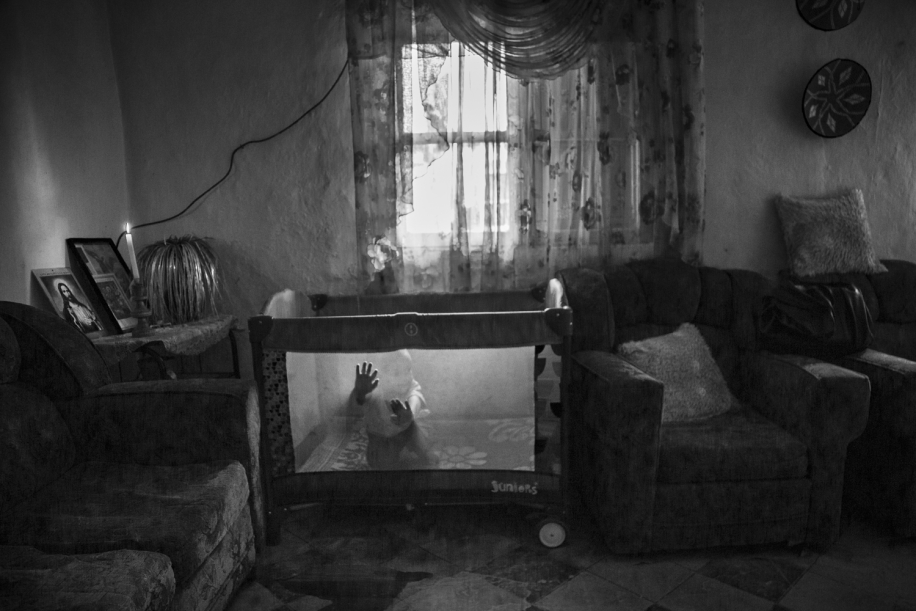
Addis Ababa – Ethiopia. 6 November 2017. An Eritrean child in the living room his parents share with other stationary refugee families. The conditions of refugee children are harsh, because they spend many hours alone while their parents try to make a living in a foreign country. Since 2000, Ethiopia has received and hosted thousands of Eritrean refugees fleeing persecution linked to involuntary open-ended military conscription, arbitrary arrest and detention without trial, compulsory land acquisition, and other systematic human rights violations. Following the signing of the Joint Declaration of Peace and Friendship by the governments of Ethiopia and Eritrea in July 2018, UNHCR has seen an increase of new arrivals from Eritrea. By the end of June 2020, the registered population under the Shire area of operation stood at 149,114 Eritreans 48% of which are children (“Ethiopia Refugee Response Plan – Quarterly Monitoring Report”, UNHCR, 2020). Following the war in Tigray (3 November 2020), many children and women from this area went to Addis Ababa.